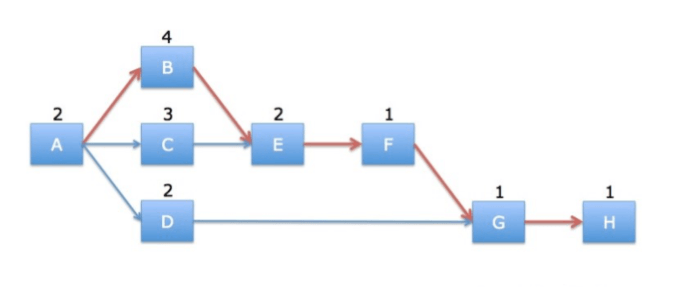
Click the button to start reading
Wanna Really Make Things Cruise? How to Use Crashing and Fast Tracking in Project Management
Have you ever hit snooze so many times in the morning that you had to skip the normal routine of taking the bus to work, and order a Lyft instead? Maybe to save additional time, you ditched the breakfast plan to have hot oatmeal, and rather ate a breakfast bar on the way to work.
Both in work and in life, and those spaces in-between, we’re always scheming and maneuvering with time.
Project managers know it’s rarely possible to meet deadlines and still remain within a project’s budget and scope. They’re always looking for ways to tweak a schedule.
Project managers know it’s rarely possible to meet deadlines and still remain within a project’s budget and scope. They’re always looking for ways to tweak a schedule.
To do so, they often utilize the very same strategies we use when we’re running late in the morning: they find a more expensive yet faster option, or they complete two normally sequential tasks at the same time. These two techniques are known in project management as fast tracking and crashing.
Do you want to consistently hit deadlines, or even complete projects ahead of schedule? Then keep these two techniques in your arsenal.
Let’s look into how fast tracking and crashing work, and where they fit in a project planning strategy.
![]()
Definitions and Examples
The techniques of crashing and fast tracking reduce the time it takes to complete a project. In order to explain how each works, it’s necessary first to define constraint, schedule compression technique and critical path method.
The Project Management Glossary defines constraint as “a limitation on a project. Among other things, constraints may be financial or based on time or resource availability.”
The triple constraints of any project are its scope, time and cost. Whenever any of these constraints changes, it affects the other two. For example, if you reduce the time it takes to complete a project, either the cost must increase or the scope must decrease.
A schedule compression technique is just like it sounds: it’s a method for decreasing the length of time it takes to complete a project. We compress our morning schedule, for example, when we eat breakfast on the way to work, or when we utilize a faster mode of transportation than usual.
Note that a schedule compression technique simply decreases time; it does not change the scope. The same amount of work is completed, but the project’s duration, or its critical path, is decreased.
What, then, is a critical path method? It’s a process of looking at all the tasks needed to complete a project, and plotting them out sequentially. This method arranges tasks in relation to one another, carefully considering which must be performed ahead of others, and which tasks can be completed at the same time.
The critical path method allows project managers to determine the shortest amount of time needed to complete a project.

With these terms in mind, let’s define the two schedule compression techniques known as fast tracking and crashing.
Fast Tracking Defined
To fast track means to take two sequential activities on a critical path and arrange them parallel to one another. Rather than complete one activity after the other, the two activities are completed at the same time.
The PM Glossary defines fast tracking as: “A schedule compression technique or duration compression technique in which the duration of a critical path is shortened by performing sections of some critical path activities concurrently instead of consecutively.”
Perhaps these activities ideally would be performed sequentially, but fast tracking overlooks this, as well as any dependencies between these two activities, and completes them in parallel.
What is a dependency? It’s a relationship between two activities that determines when one activity can begin.
For example, in the project of decorating a room, the walls must be painted before paintings are hung on the wall. These two tasks are dependent, as one must be completed before the other can begin.
Fast Tracking Example
We fast track things all the time in our day-to-day lives. Sometimes this is also known as multitasking. Let’s say you want to call your sister and cook dinner. Why not do both at the same time?
Consider another example of a web design project. Two tasks might be to design the website and write copy for it. A fast track would be to complete these tasks concurrently rather than sequentially.
Fast tracking becomes more complicated with dependent tasks. Take the two tasks of ironing shirts and washing several loads of laundry. It is possible to do these in parallel, but it requires washing the shirts in the first load, and then ironing the shirts as the additional loads are completed.
Fast tracking doesn’t work when two tasks have hard dependencies. This means that one task must be completed before a second task can begin. For example, two tasks in a construction project could be to install both drywall and electricity. The drywall must be completed before the electricity can be installed.
Crashing Defined
Crashing is a schedule compression technique of using additional resources in order to shorten the duration of an activity. In other words, it’s increasing the cost in order to get something done faster.
The PM Glossary defines crashing as: “A schedule compression technique used to speed up project work by increasing the rate at which critical path activities are completed by adding more resources — usually more personnel or more equipment. Crashing increases project costs, so it is used first on activities that can be sped up at the least additional cost.”
Crashing Example
Let’s say a development team is starting a project that requires a language they have never used before. Rather than going it all alone, the project manager may decide to hire an expert in the language to coach and train the team, and speed up the process.
Crashing carefully considers the relative cost increase of various activities on the critical path in order to determine the thriftiest way to shorten the schedule. For example, if additional labor for one activity is $20 an hour, and for another it’s $10, then the manager fast tracks the second activity, and hires the labor for $10 an hour.
Crashing doesn’t always work. The duration of some projects cannot be compressed by the addition of more resources. To put it humorously, nine women cannot deliver a baby in one month.
Fast tracking and crashing save time, but they come with tradeoffs as well. Let’s look into those next.
![]()
The Pros and Cons of Each
Both fast tracking and crashing offer the benefit of shortening a project’s schedule. This is principally why they’re utilized. But what other impacts do these techniques have on the project?
Benefits of Fast Tracking and Crashing
In addition to saving time, both techniques can increase float for activities that are not on the project’s critical path. This means they increase the flexibility of when the activity can be completed.
This additional float decreases a project’s overall risk. By crashing an activity, and completing it in three days rather than five, it reduces the risk that the activity is not complete when it needs to be.
Drawbacks
Fast tracking and crashing negatively impact a project differently, so let’s look at their drawbacks individually.
A downside of crashing, as discussed, is that it increases a project’s cost. In the interest of saving time, a project manager may crash several activities, and cause the project to go over budget.
Fast tracking poses a few more problems than crashing. Not only does it increase a project’s risk, but it also requires more communication and may lead to rework.
How is this? Let’s look at an example to demonstrate the drawbacks of fast tracking.
Say a team is creating a video for a client. It needs to write a script, sew costumes, and hire a cast. Rather than do these activities sequentially, the team decides to save time by doing them all at once.
As it turns out, the team hires a cast that does not fit the costumes. This leads to re-work and additional costs.
In worst case scenarios, fast tracking can backfire and actually increase a project’s overall time.
Crashing or Fast Tracking: Which is Better?
Simply because crashing offers the same benefits with fewer downsides, it’s the preferred technique for schedule compression.
However, the nature of an activity determines which technique to utilize. As explained, crashing doesn’t work with every activity, and sometimes fast tracking is the more suitable option.
![]()
Application in Project Planning
Let’s look at some guidelines for knowing when to crash and when to fast track, as well as how to select the activities suitable for these techniques.
When to Crash
When looking for what to crash, focus on the activities on a critical path, as crashing these shorten the project’s duration. Use a network diagram to identify these activities.
Ideally, crash an activity that has the lowest cost for the greatest decrease in time.
However, sometimes in order to reduce the critical path, it’s necessary to select a more expensive activity. Only select this when it’s sure to decrease the critical path.
When to Fast Track
Use a network diagram to identify which tasks to fast track as well. Find sequential tasks without any hard dependencies. Consider what might happen if these two tasks were performed in parallel.
Risks can be defined as uncertainties that matter, and by brainstorming any uncertainties around the two activities, it’s possible to pinpoint any risks that fast tracking might introduce.
If performing the two tasks in parallel doesn’t open the project up to huge risks, then update the network diagram to put the two tasks alongside each other.
![]()
In Combination With Other Techniques
As discussed, fast tracking and crashing affect the time, but not the scope, of a project. When exploring ways to tweak a schedule, it’s possible to combine these schedule compression techniques with techniques that impact a project differently. Let’s look at two possibilities.
Scope Reduction
Essentially this means reducing some of the project’s requirements. This is a quick and easy way to shorten a project’s duration.
One obstacle to this method, however, is that the client may need to have all the requirements met, and so won’t agree to it.
Quality Reduction
Another method for shortening a schedule is to decrease the amount of time spent on quality control. For example, a software project might decrease its testing processes. In addition to time, this method also decreases cost.
At the same time, this method introduces high risks, as it increases the likelihood that the team produces a low-quality deliverable.
Powers Combined
Oftentimes, in order for a project to meet a deadline, a project manager combines several techniques.
Let’s take a house remodel, where the owner imposes the hard deadline of living in the house by Christmas. In November, the team still has eight weeks of work, including expanding the deck, painting the living room and installing carpet. The project manager may have a discussion with the client, and come up with a plan to hire more laborers to paint the interior, and scrap the requirement of expanding the deck.
In this example, the project meets its deadline by both reducing the scope and compressing the schedule.
Understanding the possibilities for shortening a schedule, and the tradeoffs of each, allows a project manager to tweak a project in a way that delivers the most value to the client.
Conclusion
Whether it’s getting to the airport to make a flight, or completing a theater remodel in time for a big performance, we’re always resorting to the tactics of crashing and fast tracking to meet deadlines and shorten schedules.
Fast tracking and crashing don’t work in every scenario, but they’re definitely solid go-tos when a project has a looming deadline. It’s always necessary to consider the tradeoffs when deciding which technique to use.
When you’re planning a project, do you prefer to take the twisty scenic byways, or fast track it by heading onto a smoothly paved highway?















